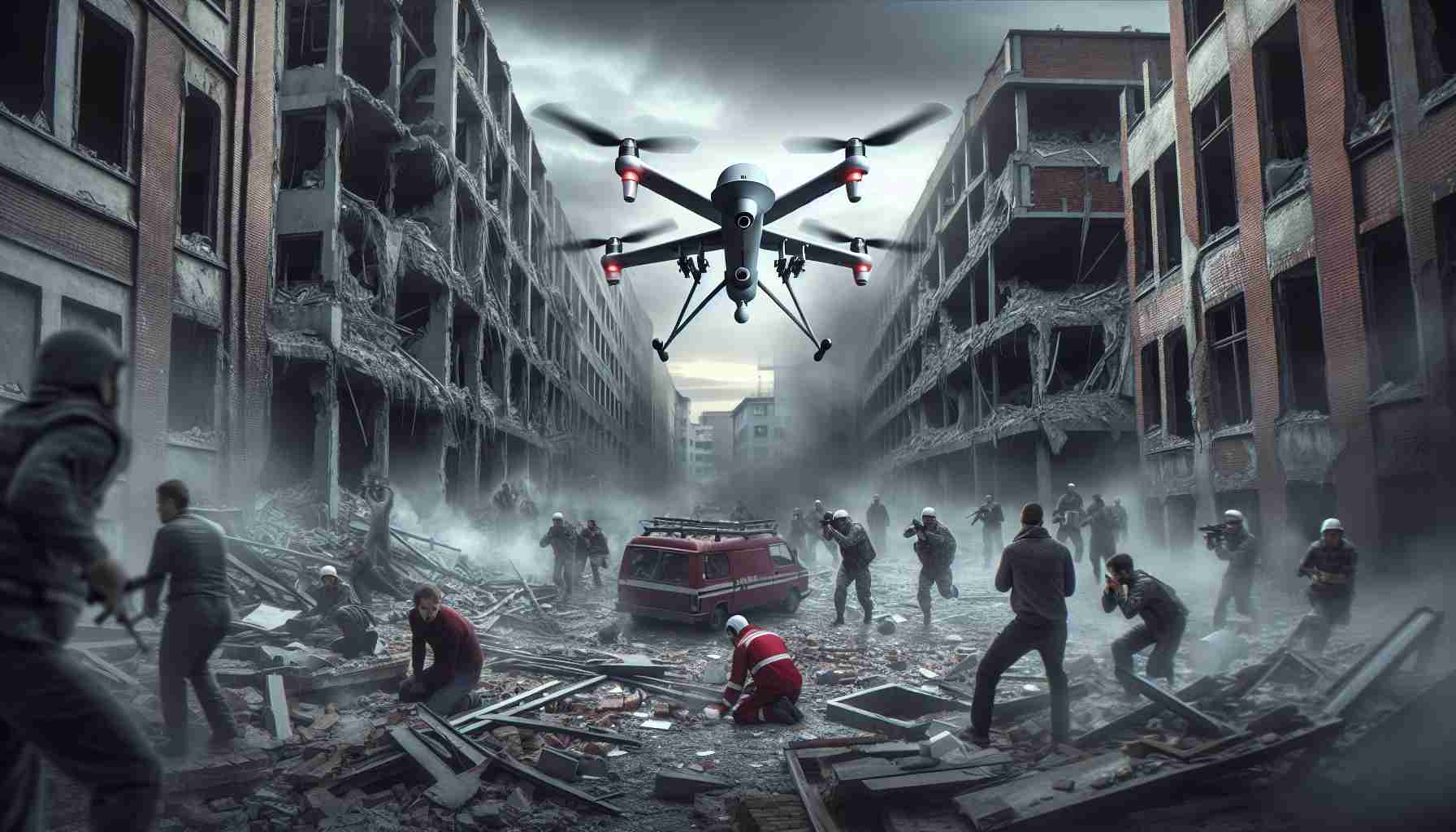- Agricultural drones are revolutionizing farming by allowing precise applications of fungicides and fertilizers.
- These drones are more cost-effective than traditional aircraft, especially in challenging terrains.
- Their efficiency results in reduced waste and a smaller environmental impact, which is vital as farms expand.
- The industry faces regulatory challenges, with many new pilot applicants encountering bureaucratic delays.
- Concerns over Chinese-manufactured drones are debated, with critics asserting they do not pose significant threats.
- Agricultural drones offer a combination of technology and sustainability that could transform farming for future generations.
Imagine a serene Nebraska cornfield, where a poised 83-pound drone takes flight, its propellers buzzing like a swarm of diligent bees. This isn’t just a high-tech toy; it’s a game-changing tool for modern agriculture, transforming how farmers manage their crops. With the ability to spray fungicides and fertilizers with unmatched precision, agricultural drones are capturing the attention of the farming world.
Meet Paige Browning, a dedicated rancher who pilots one of approximately 1,000 FAA-authorized agricultural drones in the U.S. These advanced machines, priced between $30,000 and $50,000, are often more cost-effective than traditional planes, especially in tricky terrains filled with hills and obstacles. The efficiency of these drones means less waste and a smaller environmental footprint—which is crucial as farms grow larger.
However, the success of this burgeoning industry faces headwinds from federal regulations that struggle to keep pace with innovation. Over 1,200 new pilot applications flooded in within just six months of 2024, yet some hopeful pilots find themselves stuck in bureaucracy, with many even turning to illegal flights in desperation.
As the FAA navigates a complex web of rules, fears loom over proposed bans on Chinese-manufactured drones. Critics argue these worries are exaggerated, asserting that these advanced drones lack any networking capabilities that would allow for unauthorized control or data breach.
The key takeaway? Agricultural drones present a unique fusion of technology and sustainability that could significantly reshape the future of farming, making it cleaner and more efficient. As the industry attempts to soar above regulatory hurdles, the potential benefits to farmers—and the planet—are too significant to ignore.
Soaring Into the Future: How Agricultural Drones are Revolutionizing Farming
Agricultural drones are becoming integral to modern farming, offering innovative solutions for crop management and sustainability. With advancements in technology and increasing adoption, these drones are not only enhancing efficiency but also paving the way for a greener future in agriculture.
Innovations in Agricultural Drones
– Multi-spectral Imaging: Newer drone models are equipped with multi-spectral cameras, allowing farmers to monitor plant health by capturing data from different wavelengths. This helps in early detection of diseases and nutrient deficiencies.
– AI Integration: Many drones now leverage artificial intelligence to analyze aerial data and provide actionable insights. This means farmers can make informed decisions based on advanced data analysis rather than intuition alone.
– Hyperlocal Weather Monitoring: Some agricultural drones are being developed with weather monitoring capabilities, providing real-time updates on conditions directly over the crops, thus optimizing spraying and irrigation schedules.
Features and Specifications
– Flight Duration: High-end agricultural drones can fly for up to 60 minutes continuously, allowing for extensive surveying of large fields in one go.
– Payload Capacity: Advanced drones can carry up to 20 liters of liquid for spraying fertilizers or pesticides, while also having the capability to distribute seeds.
– Software Compatibility: Many drones come integrated with farm management software, enabling seamless data integration and historical tracking of crop health trends over time.
Pros and Cons
– Pros:
– Precision Agriculture: Drones allow for precise application of fertilizers and pesticides, reducing chemical usage.
– Cost-Effective: Compared to traditional methods, drones can reduce operational costs while increasing yield.
– Time Efficient: Drones can cover large areas quickly, drastically reducing the time needed for crop monitoring.
– Cons:
– Regulatory Challenges: Farmers face delays in getting regulatory approvals, which can hinder progress.
– Initial Investment: Although they save costs long-term, the initial investment can be prohibitive for small farmers.
– Data Security Concerns: While many drones are secure, concerns about data privacy and potential hacking persist.
Market Forecasts
The market for agricultural drones is projected to reach $6.5 billion by 2026, growing at a CAGR of 30%. This growth is attributed to increasing demand for agricultural productivity and the widespread adoption of precision farming techniques.
Challenges Ahead
While the potential of agricultural drones is immense, significant challenges remain, particularly concerning regulations. The Federal Aviation Administration (FAA) is under pressure to modernize its rules to enable safer and more accessible drone operations, particularly as demand surges.
Most Important Questions
1. What are the main advantages of using drones in agriculture?
Drones offer precision in crop management, including targeted application of fertilizers and pesticides, which can lead to cost savings and increased yields. They also enable real-time monitoring of crop health.
2. How are regulations affecting the agricultural drone industry?
Current regulations are often slow to adapt to new technologies, causing delays in drone deployment and even illegal flying in some cases. Better regulatory frameworks are needed to support innovation.
3. What innovations are driving the future of agricultural drones?
Innovations such as AI, multi-spectral imaging, and real-time weather monitoring are significantly enhancing the capabilities of agricultural drones, allowing for smarter farming practices and better crop management.
For more insights on agricultural technology, visit TechTarget to stay updated on trends and advancements.
The future of farming is indeed in the skies, as agricultural drones reshape practices and promote sustainability in an essential sector.




















